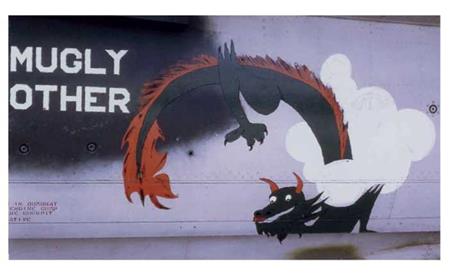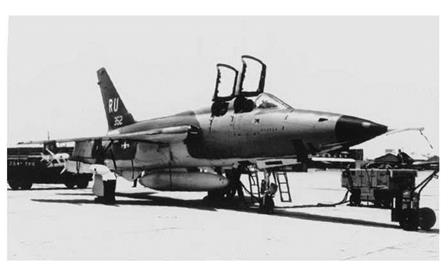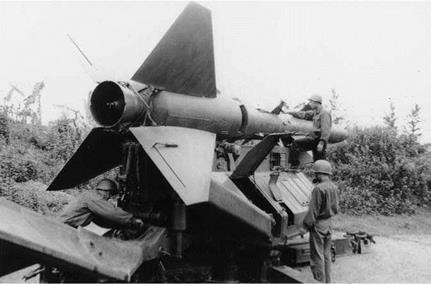THE STRATEGIC SITUATION

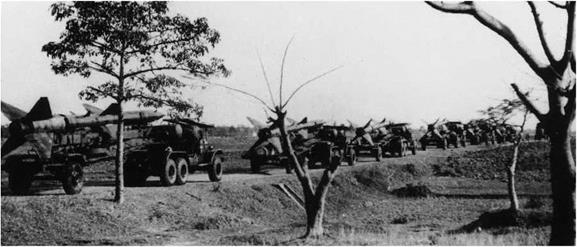 |
In 1964, with American involvement in Vietnam escalating into direct rather than covert military intervention, the USAF’s primary doctrine of strategic bombing remained much the same as it had been in 1945. President Lyndon B. Johnson’s request for plans to attack North Vietnam produced an air force list of 94 targets for strategic bombing attacks that would have quickly removed that country’s limited industrial, transportation and military structures had they all been attacked. It was assumed that this in turn would negate the North Vietnamese desire to take control of South Vietnam and neighboring countries.
Originally, the attacks were to have been delivered by the B-52s of SAC, which, under Gen Curtis E. LeMay, had sustained the concept of massive atomic retaliation as the USAF’s raison d’etre. The strike fighters ofTAC (led by Gen Otto Weyland) had also assumed a nuclear role since the mid-1950s.
![]()
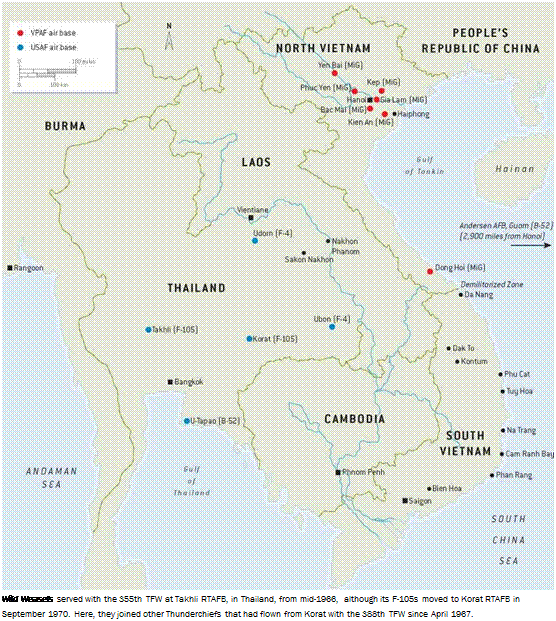
The politicians insisted on very limited, conventional warfare responses instead, so B-52s were held back from North Vietnam for seven years. The attack task instead fell to strike fighters such as the F-100 Super Sabre and F-105 Thunderchief, which were generally unsuited and unprepared for World War Il-style “iron bomb” raids. As Gen John Vogt (deputy commander for air operations, Military Assistance Command, Vietnam) commented in 1972, “The USAF did not have an all-weather bombing
|
|
capability. This was a nemesis in the Rolling Thunder campaign”. During the monsoon season, from November to March, “the enemy had almost a sanctuary”. Nevertheless, from February 24, 1965 to October 31, 1968, the USAF flew more than a million sorties and dropped 750,000 tons of bombs in its longest-ever bombing campaign, Operation Rolling Thunder.

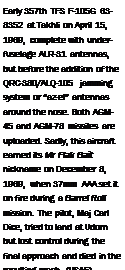
Rather than intervening directly, as many feared they would, the Soviet Union and China agreed to North Vietnamese Premier Pham Van Dong’s 1964 requests for MiG fighters, SAMs and anti-aircraft artillery, together with the radar and technical expertise to operate them. In March 1965 the Pentagon anticipated the imminent delivery of SA-2s as a response to Rolling Thunder attacks and the possibility of B-52 strikes — the missile had of course been designed specifically to oppose the latter. By mid-1966 North Vietnam had a full, Soviet-style, integrated air defense system centered on Hanoi, which soon boasted the most heavily defended airspace in the history of aerial warfare.
|
|
New Yorkers Majs John Revak and Stan Goldstein reckoned they were among the last Wild Weasel crews during the Rolling Thunder period to complete 100 missions. Seen here with CBU-armed F-105F Dragon III, their assigned aircraft in 1968 was actually
62- 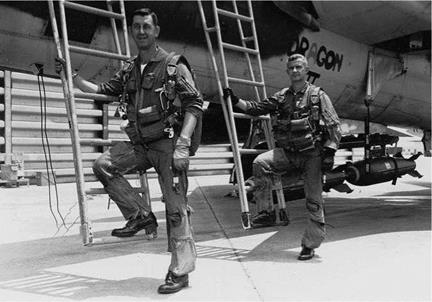 4424 Crown 7 of the 44th TFS. Revak and Goldstein flew their 100th mission – an Iron Hand for a RESCAP operation over North Vietnam – in
4424 Crown 7 of the 44th TFS. Revak and Goldstein flew their 100th mission – an Iron Hand for a RESCAP operation over North Vietnam – in
63- 
 |
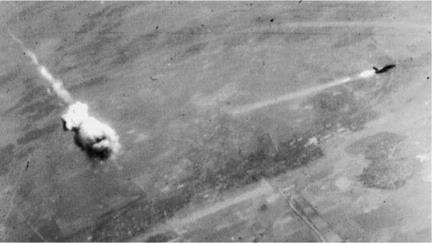 |
8306 Bad SAM. Assigned to Majs Dornberger and Carver at the time, this aircraft later participated in the Son Tay rescue mission. (USAF)
Ironically, far more US tactical aircraft were shot down by AAA guns protecting SAM sites than by the missiles themselves, small-caliber AAA accounting for around 85 per cent of the US aircraft losses during Rolling Thunder. However, the threat of SAM hits at altitudes above 1,500ft forced aircraft to enter the lethal range of most AAA, while the need to evade an oncoming SAM usually forced a pilot to jettison his ordnance load, effectively aborting his mission.
Despite the Cuban experience, the USAF was comparatively ill-prepared in 1965 to tackle SAM and radar-directed AAA threats, and it did not expect to face them over North Vietnam. The basic technology was well understood, thanks in part to a copy of the SA-2 manual obtained through the spy Oleg Penkovsky in 1960 and via electronic intelligence of SA-2s in Cuba. Development work had begun on the QRC-160 jamming pod for tactical aircraft to carry externally, the EB/RB-66 detection/jamming aircraft and SAM launch-warning devices, the first of which were installed in Trojan Horse U-2s overflying Hanoi in 1965. However, many in Washington, DC and the Pentagon assumed that the threat of US air power would be enough to deter Vietnamese insurgency. Indeed, the appearance of SAM sites did not at first convince President Johnson’s civilian advisors, including Robert McNamara, that the Russians would actually allow them to be used against US aircraft. The Joint Chiefs of Staff, on the other hand, unanimously advocated immediate destruction of the first sites.
![]()
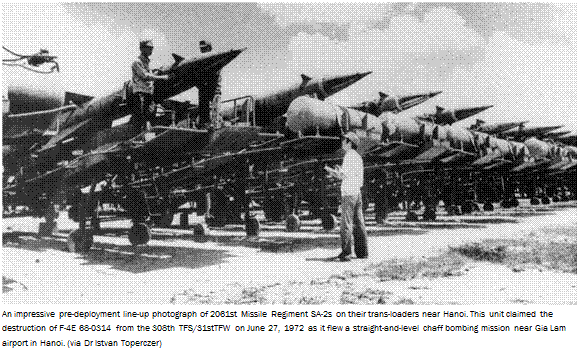 |
In fact, the SA-2 represented the most important advance in the establishment of a comprehensive North Vietnamese air defense system, a process that had begun in October 1963 with the merger of the VPAF with radar and AAA batteries under the overall command of Col Gen Phung The Tai. When US air attacks began, Soviet Premier Alexei Kosygin visited Hanoi, and thereafter Pham Van Dong proved adept at making the Russians and Chinese vie with each other in supplying modern air
 defense equipment, in particular SAMs and MiG-21s from the USSR and MiG-17 and MiG-19 copies made by Shenyang in China, totaling 65 fighters by August 1966.
defense equipment, in particular SAMs and MiG-21s from the USSR and MiG-17 and MiG-19 copies made by Shenyang in China, totaling 65 fighters by August 1966.
The appearance of SAM sites prompted demands from the Joint Chiefs of Staff for decisive retaliation against them, including a B-52 night attack and the bombing of MiG airfields. Opinion was divided over whether the Soviet Union and China would respond in kind to this action. On one hand the State Department believed that Chinese fighters might even intercept US jets over Hanoi, while the CIA felt that there would be no risk of this kind of intervention. President Johnson delayed, fearing casualties to Russian and Chinese advisors at the sites, but accepted foreign policy advisor William Bundy’s proposal that they should be bombed “if they are used to inflict significant losses on us”.
The North Vietnamese relied heavily on Soviet personnel providing them with technical expertise for the operation of their missile batteries. Almost 17,000 of them worked at SAM sites and other defense installations from April 1965 onwards, and four were killed in action.
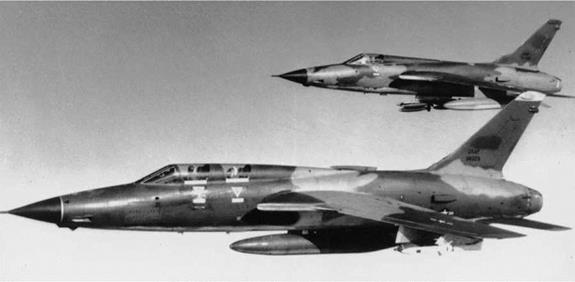 |
Initially, North Vietnamese SAM crews were trained in the Soviet Union, and subsequently at ten centers in Vietnam, but the first operational SA-2s were manned by PVO-Strany personnel from Russia commanded by Gen G. A. Belov and Col G. Lubinitsky. Col Tsyganov had the first operational regiment, the 236th, in place near Hanoi by July 1965, and three other regiments, manned largely by Russians, were in service by the end of 1966. Each regiment commanded four launch batteries, with six launchers per battery. When Lubinitsky’s site fired on an F-105 escort flight of four “Leopard” F-4C Phantom Ils from the 47 th TFS on July 24, 1965, one was destroyed. Capt Roscoe Fobair was killed and Capt Richard “Pop” Keirn, a former Eighth Air Force B-17 pilot and World War II PoW, entered captivity once again. SAM warnings from a nearby RB-66 had not been received by the crew in time to take evasive action. Two other aircraft were downed by the same site later that month.
|
|
This loss resolved the Johnson administration’s doubts about Soviet policy in deploying the missiles, and it also prompted urgent redress to protect American aircrews. With 16 squadrons of tactical fighters, five tactical reconnaissance units and 21 EB/RB-66 electronic warfare aircraft scheduled to deploy to Southeast Asia by the end of 1966, the potential losses to SAMs could easily be foreseen. This was particularly true of the two F-105D/F Thunderchief tactical fighter wings based at Takhli and Korat RTAFBs in Thailand, which were responsible for the majority of the Rolling Thunder bombing missions over North Vietnam.
A solution for their self-protection was soon available through Project Problem Child at Eglin AFB, where Lt Col Ingwald Haugen devised a four-ship “pod formation” for tactical aircraft. In October 1965 tests, each F-105 carried a pair of General Electric QRC-160-1 D/E band jamming pods tuned to defeat the “Fan Song’s” track-while-scan emissions. Their combined jamming power protected the formation from a missile lock-on apart from a brief period when it was directly over the site.
Sadly, Pacific Air Force policy-shapers regarded the pods as unreliable and a wasteful use of two of the F-105’s five weapons/fuel pylons, so a delivery of QRC-160-1s was soon returned to the USA. After very heavy losses of F-105s in the summer of 1966, further combat trials were ordered, and by October the pods became an essential, highly effective addition for all F-105 missions to North Vietnam. Thunderchief losses to radar-directed AAA and SAMs fell from 72 in the “pre-pod” six months to 23 in the six months following their introduction.
The second potential remedy proved far more difficult to implement. Following the July 24, 1965 Phantom II shoot-down, SAM site attacks were finally allowed, but such strikes in the first three days after the incident cost no fewer than six F-105s. It was in inauspicious beginning for a seven-year, cat-and-mouse war between the Thunderchief and the SA-2.











